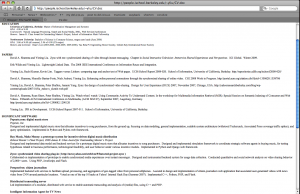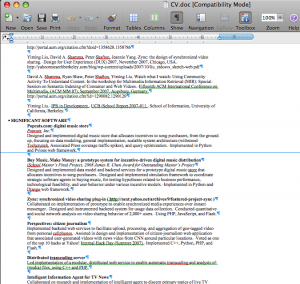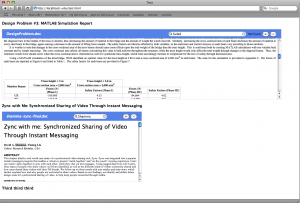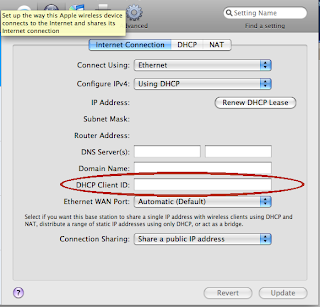So while compiling PHP 5.2.8 on OS X 10.5, you might run into something like:
Undefined symbols for architecture i386:
"_xmlTextReaderSchemaValidate", referenced from:
_zim_xmlreader_setSchema in php_xmlreader.o
"_xmlTextReaderSetup", referenced from:
_zim_xmlreader_XML in php_xmlreader.o
ld: symbol(s) not found for architecture i386
collect2: ld returned 1 exit status
Undefined symbols for architecture x86_64:
"_xmlTextReaderSchemaValidate", referenced from:
_zim_xmlreader_setSchema in php_xmlreader.o
"_xmlTextReaderSetup", referenced from:
_zim_xmlreader_XML in php_xmlreader.o
ld: symbol(s) not found for architecture x86_64
This doesn’t only happen with libxml. If you’ve installed any extra updated libraries, like iconv or tidy or any library that has significant symbol changes between versions, it’ll die in similar ways. The MacPorts folks have encounted similar issues in ticket 15891, but WONTFIX‘ed the issue. Apparently the PHP devs are also punting on the problem.
The immediate cause is that you have multiple versions of some shared libraries. For example, in the case above, I have two libxml versions — one in /usr/lib, and another in /usr/local/lib. This is because I do not want to overwrite the Apple-provided libxml version, but still needed new features provided in later libxml versions. The arrangement works fine in every other software compile except this one, so I investigated further.
The root of the problem
Despite the developers’ airy dismissal of the issue, the underlying problem is indeed that the Makefile generated by PHP at configure time is slightly broken. In Makefile and Makefile.global, you’re going to see this line:
libs/libphp$(PHP_MAJOR_VERSION).bundle: $(PHP_GLOBAL_OBJS) $(PHP_SAPI_OBJS)
$(CC) $(MH_BUNDLE_FLAGS) $(CFLAGS_CLEAN) $(EXTRA_CFLAGS) $(LDFLAGS) $(EXTRA_LDFLAGS) $(PHP_GLOBAL_OBJS:.lo=.o) $(PHP_SAPI_OBJS:.lo=.o) $(PHP_FRAMEWORKS) $(EXTRA_LIBS) $(ZEND_EXTRA_LIBS) -o $@ && cp $@ libs/libphp$(PHP_MAJOR_VERSION).so
where $MH_BUNDLE_FLAGS is usually defined as something like
MH_BUNDLE_FLAGS = -bundle -bundle_loader /usr/sbin/httpd -L/usr/lib \
-L/usr/lib -laprutil-1 -lsqlite3 -lexpat -liconv -L/usr/lib -lapr-1 -lpthreadThe problem is that this hardcodes the search paths for linking shared libraries. GCC searches for shared libraries to link in the order of the provided -L paths. In this case, MH_BUNDLE_FLAGS is expanded immediately after $CC — so the load order is:
- /usr/lib
- /usr/lib (these are redundant, and so will probably be collapsed into one path)
- …every other custom library path you specify
Now you see the issue. No matter what your library paths are set to, the PHP compilation system will insist that whatever shared libraries in /usr/lib take precedence. Therefore, even if you specified that another version (say, libxml.dylib in /usr/local/lib) should be used instead, the invocation to link against -lxml2 will search in /usr/lib first. And since it finds the old version, which may be missing a number of symbols, the compilation blows up right there.
Evidence
And indeed, if you look at the (rather long and massive) compilation/link command right before it fails, you’ll see:
gcc -bundle -bundle_loader /usr/sbin/httpd -L/usr/lib -L/usr/lib \
-laprutil-1 -lsqlite3 -lexpat -liconv -L/usr/lib -lapr-1 -lpthread -O2 -I/usr/include -DZTS \
-arch i386 -arch x86_64 -L/usr/local/lib ... emphasis mine, where /usr/local/lib might be /opt/lib or whatever custom path you provided to configure.
Solutions
The trivial solution is to manually invoke that last line of compilation, but swapping the -L load paths.
gcc -bundle -bundle_loader /usr/sbin/httpd -L/usr/local/lib -L/usr/lib \
-L/usr/lib -laprutil-1 -lsqlite3 -lexpat -liconv -L/usr/lib -lapr-1 -lpthread -O2 -I/usr/include -DZTS \
-arch i386 -arch x86_64 ... This is easy to do and takes just a second.
Another possible solution is to patch the Makefile, such that MH_BUNDLE_FLAGS comes later in the compilation line:
libs/libphp$(PHP_MAJOR_VERSION).bundle: $(PHP_GLOBAL_OBJS) $(PHP_SAPI_OBJS)
$(CC) $(CFLAGS_CLEAN) $(EXTRA_CFLAGS) $(LDFLAGS) $(EXTRA_LDFLAGS) $(PHP_GLOBAL_OBJS:.lo=.o) $(PHP_SAPI_OBJS:.lo=.o) $(PHP_FRAMEWORKS) $(EXTRA_LIBS) $(ZEND_EXTRA_LIBS) $(MH_BUNDLE_FLAGS) -o $@ && cp $@ libs/libphp$(PHP_MAJOR_VERSION).so
This will force your library paths to be searched before /usr/lib, thus resolving the link problem.
update 7/18/09
An anonymous reader mentions that you could also specify the right libxml by full path, instead of letting it use -lxml. Basically, in the last compilation line, you would remove any mentions of -lxml and replace that with the full path to your library e.g. /usr/local/lib/libxml.dylib. In fact, this is probably the way that has the least possible side-effects, since you aren’t changing the search order for any other libraries.
Discussion
This is not the first time that PHP core developers have refused to fix a compilation issue that is arguably preventable through actual testing under different installation scenarios. This is an “edgier” edge case than the tidy.h issue, but still should be fairly noticeable for a substantial number of people.
The “You should only have one library installed” argument is, to be honest, unnecessarily arrogant (sadly, not as a rare a problem as you’d like in some open source development projects ). I understand that it’s an open source project, and no self-respecting software engineer likes to use time on project plumbing / build systems rather than work on the product. However, on OS X, due to the lack of official Apple package management systems, no one should be overwriting system default libraries — down that way lies insanity, especially at every system or security update. PHP’s build system is obviously broken any time there is a substantial difference between user-installed libraries and system libraries. This bad behavior is especially egregious, because the configure command allows you specify your own library path — misleading users into thinking that the path they specified would be obeyed at compile time. If you only intend for the system library to be used and no other, perhaps the configure script should auto-detect this on OS X and disable that command-line option. Basic user interface design should apply even to command-line interfaces.
Note that changing link ordering may have some unforseen consequences, since the devs obviously never tested this path. For example, you should make sure the dynamic libraries are loaded in the right order at runtime. On OS X, the load path is typically hard-coded into the dylib, so usually there won’t be a problem — but there may be edge cases. Test your build (and any PHP extensions you built) before using it in production!






